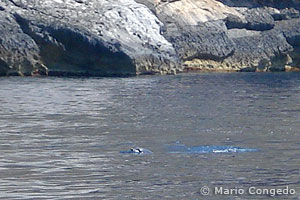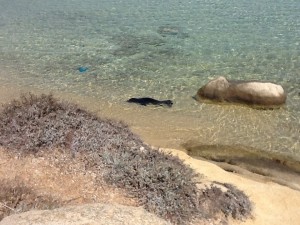
A Mediterranean monk seal pup, possibly separated from its mother following rough weather earlier in the week, has been rescued on the Cycladic island of Naxos. It was taken into care and evacuated to Athens on 20 September by the Greek NGO MOm, the Hellenic Society for the Study & Protection of the Monk Seal.
Two German visitors to Naxos alerted TMG of the stranding, describing the young seal as approximately 1-1.2 meters in length with characteristic white belly patch. Their first sighting occurred at around 12:00 noon on Wednesday 19 September at Agia Ana, where their curiosity was aroused by the presence of a small crowd at the harbour beach.
“When we got closer,” Thomas Lienenbröker and Thomas Sebralla reported, “we realized that there was a small seal trying to crawl onto the beach. […] There were about maybe 10 people around, of which two Greeks tried to make the seal crawl back into the water. One of them grabbed the seal by its tail and took it a few meters into the sea. It swam a couple of meters and then tried to get back onto land again, a couple of meters further down the beach. We asked if anyone had called for help, and we were told that the coast guard had been informed.”
Returning to the scene at around 18.00, there was again an assembled crowd, this time including two coast guard officers. The pup, reported Lienenbröker and Sebralla, could be seen “under a bushy tree in the shade… seemingly exhausted, but alive.”
Concluding that the seal was now in safe hands, the two men left to catch the bus. “On leaving we noticed the coast guard heading towards their car and leaving the scene, with more than 25 people standing around the seal. Waiting for the bus we then could see someone grabbing the seal and taking it back into the water. It swam a short while and then tried to get back onto land again. When we left on the bus the seal had made its way back up onto the beach, with even more people looking on.”
Although the Coast Guard and Port Police form an integral part of the RINT monk seal rescue network in Greece, this case appears to demonstrate how important it would be for some designated authority to control the scene of a stranding, ensuring the appropriate measures are taken, and misguided intrusions by the public prevented.
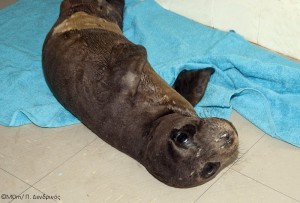
Unless indicated otherwise by expert guidance, members of the public should not approach a stranded monk seal, but keep it under observation from a distance, reporting its presence to the Port Police, or directly to MOm, the NGO which administers the RINT. Under no circumstances should the animal be touched or manhandled — factors likely to increase stress and worsen its condition, as well as jeopardising any possibility of an abandoned pup being reunited with its mother.
The 3-week old Naxos pup was described as weak and dehydrated by MOm as it arrived in Athens on Thursday, en route to Alonnisos where the organisation still operates a dilapidated 20 year old rehabilitation cabin, in much need of renewal or replacement.
Greece
Greece

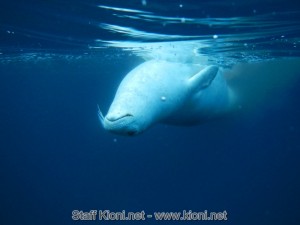 On 27 August, we published news on our
On 27 August, we published news on our 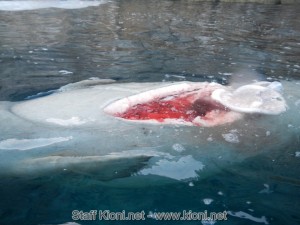 We were informed that the organisation had been in touch with Kioni as soon as news of the apparent killing appeared on the Internet. With the Port Police’s lapse in reporting the incident, however, and the body subsequently drifting away or washing up unremarked elsewhere, any chance of a necropsy had been lost.
We were informed that the organisation had been in touch with Kioni as soon as news of the apparent killing appeared on the Internet. With the Port Police’s lapse in reporting the incident, however, and the body subsequently drifting away or washing up unremarked elsewhere, any chance of a necropsy had been lost.